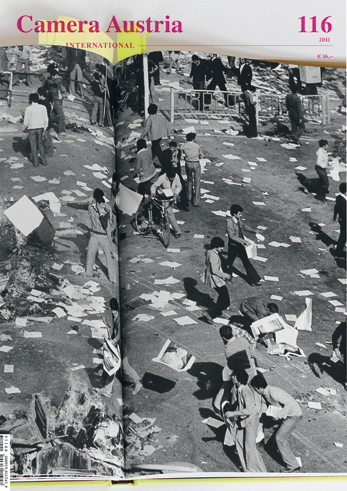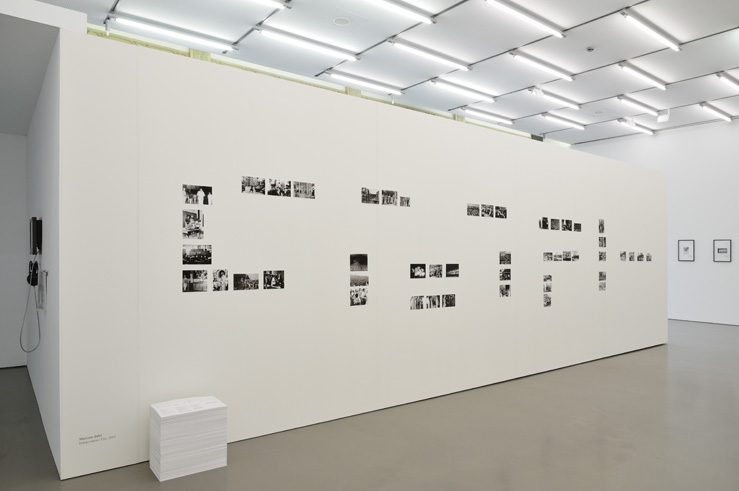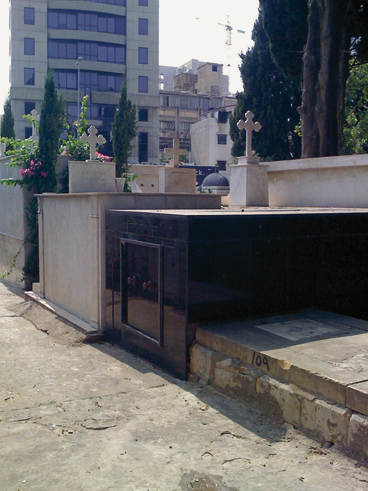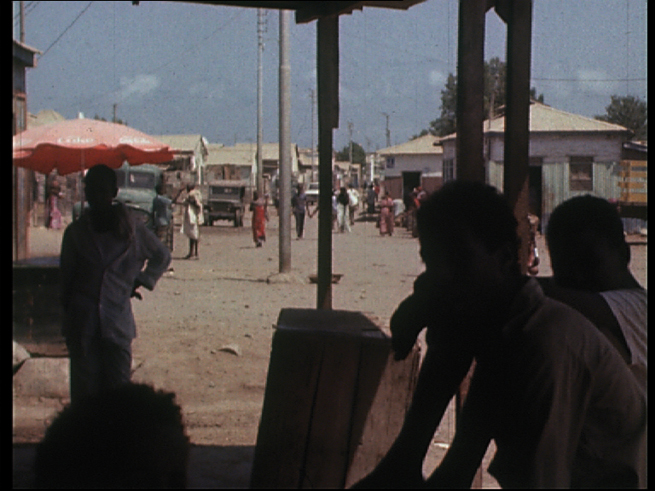Camera Austria International
116 | 2011
- BETTINA STEINBRüGGE
Maryam Jafri: Silent Witnesses: Independence Day 1936–1967 - MARYAM JAFRI
- KATRIN MUNDT
Sven Augustijnen: A Vault to Which One Keeps the Keys - SVEN AUGUSTIJNEN
- AXEL JOHN WIEDER
Global Prayers: Imaginations of a New Order Through Redemption. Images of Faith - GLOBAL PRAYERS
- JOCHEN BECKER
Global Prayers: Never Expect Power Always. Considerations on Light, Power and Religion - ANNETT BUSCH
Michael Mrakitsch: Language in the Picture
- MICHAEL MRAKITSCH
- WALID SADEK
A Time to See 4/4 The Present of Near-Blindness

Preface
Camera Austria International 116 | 2011
Preface
Entries
Forum
Vorgestellt von Sharon Lockhart:
AMANDA ROSS-HO
LISA ANNE AUERBACH
LISA OHLWEILER
ELAD LASSRY
ALEX SLADE
CARLY STEWARD
Exhibitions
Second Worlds
steirischer Herbst, various venues, Graz
WALTER SEIDL
Unheimlich vertraut. Bilder vom Terror
C/O Berlin
Seeing is believing
KW Institute for Contemporary Art, Berlin
SUSANNE HOLSCHBACH
Terrible Beauty: Art, Crisis, Change & The Office of Non-Compliance.
Dublin Contemporary 2011
various venues, Dublin
MATT PACKER
The Eye Is a Lonely Hunter. Images of Humankind.
4. Fotofestival Mannheim Ludwigshafen Heidelberg
Verschiedene Orte
MAREN LÜBBKE-TIDOW
Rollenbilder – Rollenspiele
Museum der Moderne, Salzburg
DANIELA BILLNER
Ulrike Ottinger: Floating Food
Haus der Kulturen der Welt, Berlin
REINHILD FELDHAUS
Haute Culture: General Idea. A Retrospective, 1969–1994
Art Gallery of Ontario, Toronto
CHRISTOPHER RÉGIMBAL
Carlo Mollino: Maniera Moderna
Haus der Kunst, München
EVA MARIA STADLER
Gdzie Jest Sztuka? (Where Is Art?)
Gallery Weekend in Warsaw
KAROL SIENKIEWICZ
A Pause
On Untitled (12th Istanbul Biennial)
various venues, Istanbul
BASAK SENOVA
Welt-Bilder 4
Helmhaus Zürich
WOLFGANG BRÜCKLE
Gründlich erfasst
Krupp. Fotografien aus zwei Jahrhunderten
Kulturstiftung Ruhr Essen, Villa Hügel, Essen
KERSTIN STREMMEL
Šejla Kamerić & Anri Sala: 1395 Days without Red
Artangel at 10–12 Francis Street, London
MACBA Barcelon
Museum Boijmans Van Beuningen, Rotterdam
MARTIN HERBERT
Seiichi Furuya – Mémoires
Galerie Thomas Fischer, Berlin
CAROLIN FÖRSTER
Le temps retrouvé. Cy Twombly photographe & artistes invites
Collection Lambert, Musée d’art contemporain, Avignon
Chapelle du Méjan, Arles
GISLIND NABAKOWSKI
Ansel Adams: La Natura é il mio regno
Fondazione Fotografia / Fondazione Cassa di Risparmio di Modena,
Ex Opsedale Sant’ Agostino di Modena
GIGLIOLA FOSCHI
Books
Michael Wedel: Filmgeschichte als Krisengeschichte.
Schnitte und Spuren durch den deutschen Film
Transcript Verlag, Bielefeld
DREHLI ROBNIK
Daniel G. Andújar / Technologies to the People:
Postcapital Archive. 1989–2001
Hatje Cantz Verlag, Ostfildern
TOM HOLERT
Read Carefully
e-flux journal: Are Your Working Too Much?
Post-Fordism, Precarity, and the Labor of Art
Sterberg Press, Berlin 2011
No Order. Art in a Post-Fordist Society, N° 1/2010
Archive Books, Berlin 2010
JAN WENZEL
Imprint
Publisher: Reinhard Braun
Owner: Verein CAMERA AUSTRIA. Labor für Fotografie und Theorie
Lendkai 1, 8020 Graz, Österreich
Editor-in-chief: Maren Lübbke-Tidow (V.i.S.d.P.)
Editors: Tanja Gassler, Margit Neuhold
Translators: Dawn Michelle d’Atri, Aileen Derieg, Ewa Kaningowska-Gedroyc, Emilia Ligniti, Wilfried Prantner
German proofreading: Daniela Billner
English proofreading: Dawn Michelle d’Atri, Aileen Derieg
Dank / Acknowledgments:
Gosbert Adler, Gilles Aubry, Lisa Anne Auerbach, Sven Augustijnen, Jochen Becker, Kirsty Bell, Sabine Bitter und / and Helmut Weber, Annett Busch, Helmut Draxler, Florian Ebner, Katja Eydel, Frieda Hartz, Anne Hufschmid, Nadine Jäger, Maryam Jafri, Magdalena Kallenberger und / and Dorothea Nold, Susanna Kirschnick, Elad Lassry, Sharon Lockhart, Verónica Mastrosimone, Katrin Mundt, Cédrick Nzolo, Lisa Ohlweiler, Heidi Oswald, Sevgi Ortaç, Karin Rebbert, Katja Reichard, Amanda Ross-Ho, Esther Ruelfs, Walid Sadek, Sandra Schäfer, Surabhi Sharma, Alex Slade, Sabine Spilles, Eva Maria Stadler, Bettina Steinbrügge, Charly Steward, Jens Wenkel, Axel John Wieder, Paolo Yacoub
Copyright © 2011
Alle Rechte vorbehalten. Nachdruck nur mit vorheriger Genehmigung des Verlags. / All rights reserved. No parts of this magazine may be reproduced without publisher’s permission.
Für übermittelte Manuskripte und Originalvorlagen wird keine Haftung übernommen. / Camera Austria International does not assume any responsibility for submitted texts and original materials.
ISBN 978-3-900508-00-5
ISSN 1015 1915
GTIN 4 19 23106 1600 5 00116





















